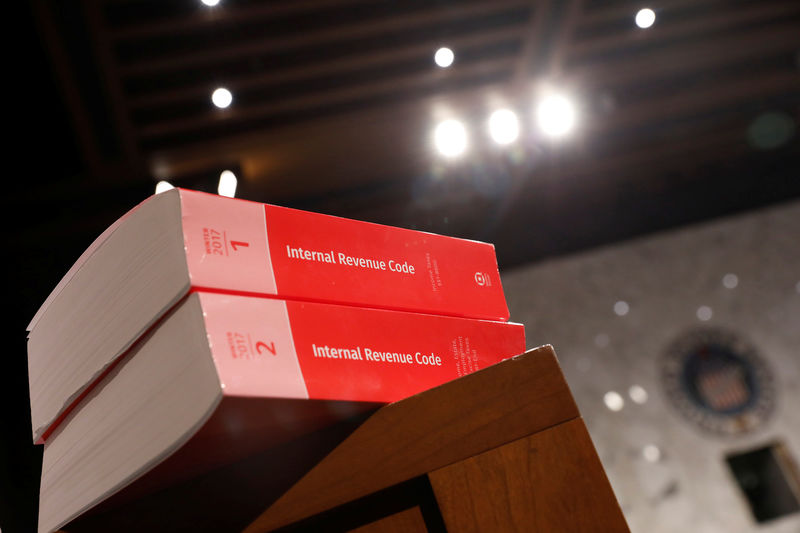(The writer is a Reuters columnist. The opinions expressed are his own.)
By Mark Miller
CHICAGO (Reuters) - U.S. Republican lawmakers want to cut taxes for corporations and wealthy people by $1.3 trillion - and they seem to want seniors to foot a good chunk of the bill.
Their 2018 budget plan would chop $473 billion out of Medicare and $1.3 trillion from Medicaid. (http://reut.rs/2mq1UhL). But the House tax plan also calls for elimination of the itemized deduction for high medical expenses.
The deduction allows taxpayers who itemize to deduct medical expenses exceeding 10 percent of adjusted gross income. This is helpful to anyone dealing with disabilities, acute or chronic conditions or long-term care and assisted living costs.
But the medical expense deduction is especially useful for older people, for the simple reason that they are more likely to struggle with acute and chronic health problems. And it is used mainly by middle-class households. Nearly half (49 percent) of taxpayers who deducted medical expenses in 2015 had income below $50,000 according to analysis of IRS records by the AARP Public Policy Institute; 69 percent had income less than $75,000.
The importance of the deduction is growing, because the number of underinsured Americans is rising. At the end of 2016, 28 percent of adults who had health insurance were underinsured, according to the Commonwealth Fund - a percentage that translates to 41 million people. Commonwealth defines “underinsured” as people whose out-of-pocket health expenses are 10 percent or more of household income, and the number has more than doubled since 2003.
In Medicare, total out-of-pocket spending by beneficiaries in 2013 averaged $6,150, according to the Kaiser Family Foundation (KFF). Nearly half of that (47 percent) was for insurance premiums, followed by three categories of health care services - long-term care facilities (18 percent), prescription drugs (12 percent) and dental services (9 percent).
RISK PROTECTION GAPS
These health service costs reflect gaps in the way we insure seniors against healthcare cost risk.
In the case of long-term care, lower-income seniors are covered by Medicaid, and wealthy households often have the resources to pay for care out-of-pocket or purchase a commercial long-term care insurance policy. “It’s a severe middle-class problem,” said Marc Cohen, a professor in the department of gerontology at the University of Massachusetts Boston.
“Middle-class people typically spend down their income and assets to reach Medicaid eligibility levels, or try to find a way to hang on to their assets - but there just isn’t much wealth to shield. So any bill that limits that deductibility is squarely nailing the middle class.”
Only 12 percent of people in their late 50s and early 60s buy commercial long-term care insurance, according to Rand Corporation research. Yet Rand found that 56 percent of people ages 57 to 61 run a 10 percent risk of spending three years or more in a nursing home and a 5 percent chance of spending more than four years in one.
Those longer stays pose major financial risks. The cost of long-term care services is rising a 4.5 percent annual rate – nearly triple the general inflation rate, according to Genworth’s annual cost-of-care survey. The insurance company reports that median annual cost of a private nursing home room this year is $97,452.
For owners of commercial insurance, premium expenses are deductible - to an extent. There is a cap on the total dollars that can be deducted annually; these are indexed for inflation and with various age thresholds. For example, this year a taxpayer over age 70 can deduct $5,110, while someone between age 50 and 60 can deduct up to $1,530
Seniors can insure against the risk of prescription drug costs with a Part D insurance plan. But Part D does not have a cap on out-of-pocket spending, and enrollees are required to pay up to 5 percent of their drug costs above a defined “catastrophic coverage” threshold often referred to as the “donut hole.”
A recent KFF study found that in 2015, some 3.6 million Part D enrollees had drug spending above the catastrophic threshold; 2.6 million of those seniors had income low enough to qualify for Medicare’s low-income subsidies - but 1 million were hit with additional high costs - a number that more than doubled between 2007 and 2015. Their annual out-of-pocket expense averaged more than $3,000 in 2015, and 10 percent of these Medicare enrollees spent at least $5,200.
Medicare does not cover dental services at all, and most seniors simply pay for it out of pocket. The average annual expense for seniors is $553 according to 2014 federal data, and the costs can be far higher for more complex procedures.
We need to expand insurance coverage in all three of these areas. Instead, policies are being advanced by the Trump White House and Republicans in Congress that would thin coverage and boost total after-tax costs.
Said Cohen: “If I knew nothing about politics in the U.S. and dropped in from another country or planet, and looked at this proposal, I would think, 'People must be really upset with the middle class in America.’”
